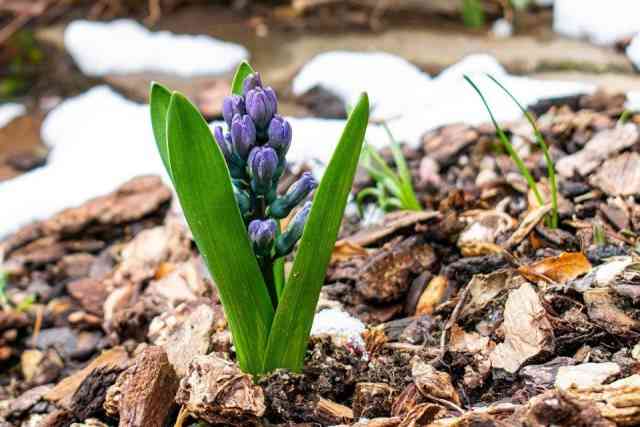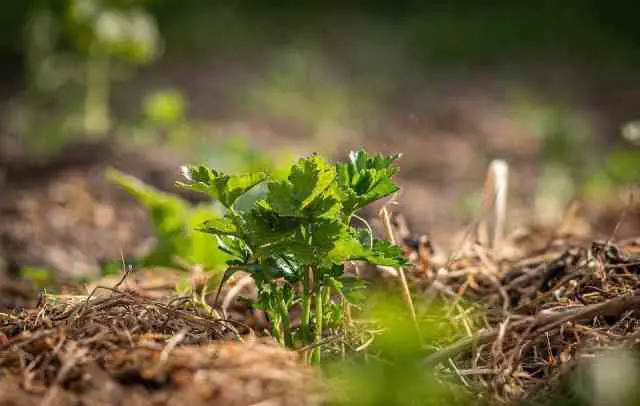Mulches bring a host of benefits for the plants. They lower evaporation to retain water for the roots, keep the soil cool in summers, and suppress weeds. Organic mulches also improve the soil structure, drainage and nutrient levels as the organic material decomposes and seeps into the soil layers. Continue reading, and you’ll learn how to mulch the soil effectively and let your plants enjoy all the benefits that it has to offer.
Types Of Mulches
You can apply two basic types of mulches to the soil: organic mulch and synthetic mulch. Both types prevent moisture from evaporating from the soil surface and suppress weeds by blocking sunlight from reaching them. However, there are some underlying differences you should know about before picking the right mulch for your garden. Let’s take a look:
Reader Poll: What online courses would interest you?
- Organic Mulches
Organic mulches are mulches acquired from dead plant material, including straw, shredded leaves, compost, pine needles, wood chippings and grass clippings. These kinds of mulches will gradually decompose and need to be replaced with a fresh layer regularly. On the plus side, the decomposition of organic mulches nourishes the soil with nutrients and improves its structure.
Weed seeds and contaminations are a common problem with organic mulches. So it pays to get it from a reliable source and make sure it’s free from any weed seeds.
- Inorganic Mulches
Though inorganic mulches do not bring any nutritional value to the soil or improve its structure, they can suppress weeds and conserve moisture just as well as organic mulches. Pebbles, gravel, black plastic and landscape fabric are some of the different varieties you can try. In addition, since they do not decompose into the soil, you won’t have to replace inorganic mulches as often as organic ones.
Subscribe to our newsletter!
On the downside, since they do not decompose, they won’t add any nutrients to the soil. Vegetable gardeners often use black plastic to mulch the ground to warm up the soil faster in spring, especially for heat-loving vegetables such as eggplants and tomatoes.

When To Apply Mulch
One of the most important considerations is when to apply mulch. The best time to apply mulch is in spring and autumn. However, in cooler climates, mulch can also be applied in winters to protect the tender perennials.
In spring, apply mulch before the weed seeds get a chance to germinate. Gardeners often apply black plastic to the garden bed early in spring to warm up the soil before planting the seeds.
In autumn, organic mulch is applied as a soil conditioner to allow time for the organic matter to decompose and improve the soil structure before you can start planting in spring.
Winter mulch is applied once your area has experienced several frosts. Spread out a thick layer of mulch around tender perennials or newly planted perennials. Shredded leaves and straw make good winter mulches.
Besides autumn, spring, and winter, you can apply mulch around young plants anytime to help them benefit from the benefits, including moisture retention, temperature control and weed suppression.
How To Apply Mulch

Though mulching is just as simple as it sounds, there are some key things to take care of.
Here are the steps to apply mulch to your garden.
- Prepare the ground
Gardeners typically prepare the ground before applying mulch. Here’s how you set up the planting bed before mulching it:
- Pull out the weeds and spent annuals.
- Rake the surface to level it out.
- Water the bed thoroughly. Mulching over moist soil will help retain the moisture in the ground for the roots to absorb.
- Apply Mulch
Once you’ve prepared the soil, it’s time to spread mulch over it. A two to three-inch layer of organic mulch works best around most plants. You can either mulch the entire garden bed or spread it evenly around the important plants. Either way, make sure that you don’t smother the young plants with the mulch or cover the stems of woody plants.
Here are the steps to apply mulch once you’ve prepared the ground:
- Apply mulch using a shovel or with your hands.
- Clear the mulch from around the stems of the plants, making sure it doesn’t contact any part of the plant.
- Smooth the mulch out with a rake.
Some Additional Tips On Mulching
Other than the basics on how and when to mulch the soil, there are some additional tips that may come in handy when mulching your garden:
- Don’t mulch too close to tree trunks because it can harbor rodents that eat away the bark and weaken the tree.
- Thicker layers of organic mulches are better than thin layers since they can insulate the soil better from the sun and prevent evaporation. However, thick mulches can prevent bulbs from growing.
- Freshly chipped grass clippings should be stored for a few weeks to allow some time to dry before applying it as a mulch.
- Organic mulches will need to be replaced regularly as they decompose and become a part of the soil.
- Mulching bare soil can prevent erosion and sediment runoff.
Conclusion
So you know all about how to mulch the soil. Make sure you get it from a reliable source and use it the right way to make the most out of the application. When applied the right way, mulches go a long way in creating a healthy, beautiful garden where both your annuals and perennials can thrive.

